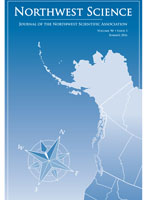Concerned stakeholders in various nations are investigating stock enhancement with hatchery supplementation as one of several strategies to restore imperiled burbot (Lota lota L.) populations. In other intensively studied species, the use of genetic markers for parentage-based tagging (PBT) has become an important tool for evaluating the ecology of hatchery-wild fish interactions. Our objective was to determine if microsatellites previously developed for studies of burbot phylogeography could be multiplexed for effective PBT. A total of 14 microsatellite loci were multiplexed in four panels and tested for PBT efficacy in a hatchery population of burbot. An exclusion-based test involving 123 anonymous offspring and 51 known parent-pairs resulted in 97% of the progeny assigning to the correct parents. Due to modest genetic diversity in the broodstock population, a high false-assignment rate (19%) was observed when parental cross information was excluded from parentage analyses. While the existing set of burbot microsatellites can be multiplexed into effective panels for PBT, we recommend the development of additional microsatellite or single nucleotide polymorphism markers to improve exclusionary power.
How to translate text using browser tools
1 August 2016
Evaluating Microsatellite Markers for Parentage-Based Tagging of Hatchery Burbot
Neil K. Ashton,
Matthew R. Campbell,
Paul J. Anders,
Madison S. Powell,
Kenneth D. Cain
ACCESS THE FULL ARTICLE

Northwest Science
Vol. 90 • No. 3
August 2016
Vol. 90 • No. 3
August 2016
Burbot
genetic markers
microsatellites
stock enhancement
tagging




